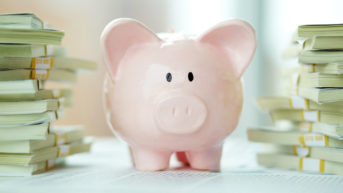If you still haven’t contributed to your registered retirement savings plan (RRSP) for the 2017 tax year, don’t worry. There’s still time. The deadline is March 1.
Here are six huge benefits of using RRSPs.
Keep yourself from spending your money
It’s hard for some people to save. There are huge penalties for RRSP withdrawals other than the withdrawals made through the Lifelong Learning Plan and the Home Buyers’ Plan.
You pretty much have your money locked in once it’s in your RRSP. Because the money is locked in, you can’t spend it for a vacation or the next hot tech toy. Your money will be thus be left alone, working hard for you.

Reduce your income taxes
If you’re in a high tax bracket, contributing to RRSPs can substantially reduce your income taxes.
If you’re in a low tax bracket, you should refrain from contributing to RRSPs so your contribution room can build up for more tax savings in the future when you get to a high tax bracket. Instead, consider investing in tax-free savings accounts (TFSAs) and taxable non-registered accounts first.
Invest tax-deferred
The returns you get in your RRSPs aren’t taxed until you make withdrawals. So your investments can compound for decades without the hindrance of taxes and grow faster than if they were in a non-registered account.
Invest for retirement
RRSPs are best used for investing for retirement. When you retire and you convert your RRSP to an RRIF, you must withdraw a minimum amount from the account every year and you can’t make any more contributions, but the remaining portfolio will still tax-deferred. You don’t have to convert RRSPs to RRIFs until you turn 71.
Get entire U.S. dividends
U.S. dividends in non-registered accounts are essentially taxed at your marginal tax rate. If you receive them in TFSAs, there’s a 15% withholding tax. If you receive them in RRSPs, you get the full dividend.
Thus, it makes sense to hold U.S. stocks, which offer above-average yields, in RRSPs. Currently, the U.S. market, represented by SPDR S&P 500 ETF Trust (NYSEARCA:SPY), offers a yield of 1.76%.
You might consider an above-average yield to be 2.64% (i.e., 1.5 times of 1.76%). For example, you might hold Procter & Gamble Co. (NYSE:PG), which offers a ~3.3% yield, in your RRSP.
Use for trading
Trading in and out of stocks isn’t for everyone, however. If you happen to trade a lot, you can use your RRSP for that because what you earn inside is tax-deferred.
There’s only so much TFSA room. When you run out of room there, your RRSP provides extra trading room. Gains you book aren’t taxed until you withdraw the amount.
The utilities have pulled back a lot recently, so you might decide to buy some Emera Inc. (TSX:EMA), as the market seems to have halted its drop, at least for now. In the meantime, the regulated utility offers a yield of nearly 5.5%.










